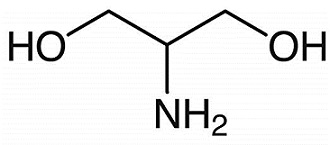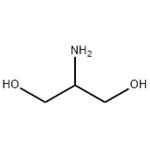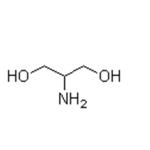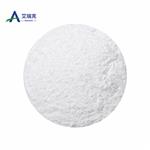What is 2-amino-1,3-propanediol used for?
Mar 2,2020
Brief Introduction
2-amino-1, 3-propanediol, which carries the trivial name of serinol, is an organic compound from the group of alkanolamines. It is a prochiral compound that is an intermediate product in the production of various fine chemicals, including drugs. Under standard conditions, it is a solid, which is very soluble in water. 2-amino-1, 3-propanediol is a very stable, hygroscopic and corrosive substance. The name serinol was chosen because of the structural similarity to the amino acidserine. In extension, derivatives thereof with substituents on the carbons of serinol are also called serinols [1].

In biological field, the amino alcohol structure is widely found in many drugs especially antihistamines. Shingosine, the major base of the sphingolipids in mammals for signal transmission and cell recognition is an amino alcohol. Amino alcohol compounds are the starting materials in the preparation of beta-lactam antibiotics, humectant for foods and cosmetics, flavouring agents as well as many oral, injectable or topical pharmaceuticals. Amino alcohols are amine buffers used in a variety of medications.
Application of 2-amino-1,3-propanediol
Serinol is used as an intermediate for non-ionic X-ray contrast agents like iopamidol (1-N,3-N-bi's (1,3-dihydroxypropan-2-yl) -5-[(2S) -2-hydroxypropanamido] -2,4,6-triiodobenzene-1,3-di-carboxamide, which is for example distributed as iopamiro®, isovue® (both Bracco Diagnostics Inc.) or scanlux® (Sanochemia). Iopamidol is employed as a contrast agent for angiography throughout the cardiovascular system.
Furthermore, serinol constitutes a precursor for drugs dealing with pain treatment. Therefore, a straight or branched alkyl chain consisting of 12 to 22 carbon atoms is linked to the C2 atom of serinol [2].
Except the application in biochemical field, Serinol is used for the production of efficient anionic emulsifiers and nonionic polyethylene emulsions. It appears in personal care product formulations and show better base strength, lower neutral equivalent, and lower volatility than traditional amine emulsifiers. It renders resinous materials water-soluble and provides base strength values with low odor levels, good water and alcohol solubility and color stability in cosmetics.
The difunctionality of serinol makes it useful as raw materials in polymer applications in both water- and solvent-based to increase the solubility of other components and improve solution stability. It functions as a pigment dispersion-aid dispersant to enhance the wetting and viscosity stability. The salts of the amino alcohols are also used in coating to improve the package stability.
Serinol maintains a constant alkalinity in the boiling water flows and condensate not to form solid products which would impede line flow. It is applied for corrosion Inhibits. So it is widely employed in the preparation of water soluble cationic flocculants and ion exchange resins which adsorb solid and colloidal particles by electrostatic attraction. It is also used for water treatment, metal treatment and absorption of CO2 gas [1].
References
[1] https://seemafinechem.com/serinol/
- Related articles
- Related Qustion
- 2-Amino-1,3-propanediol: Overview, Biological Functions and its Derivatives Feb 28, 2024
2-Amino-1,3-propanediol and its derivatives are crucial in phospholipid biosynthesis, neurotransmitter synthesis, and cellular signaling, with wide biological and chemical applications.
- 2-Amino-1,3-propanediol: natural occurrence, applications and biological synthesis Sep 19, 2023
2-Amino-1,3-propanediol is a versatile compound with applications in medicine, chemical industry, and toxin biosynthesis.
The chemical formula for Neopentyl glycol is C5H12O2, and it is a propane-1,3-diol carrying two methyl groups at position 2. The crystalline substance is synthesized industrially by the aldol reaction of formaldehyde and isobutyraldehyde.....
Mar 2,2020Organic Chemistry1,3-Bis (2,6-diisopropylphenyl) imidazolium chloride is used in organic synthesis, as well as a pharmaceutical intermediate and it is used as a reagent in the synthesis.....
Mar 2,2020Pharmaceutical intermediates2-Amino-1,3-propanediol
534-03-2You may like
- Synthesis of furfurylamine
May 18, 2023
- Application of Fmoc-N-Me-Arg(pbf)-OH
Dec 9, 2022
- The Benefits of L-Tyrosine
Nov 22, 2022
2-Amino-1,3-propanediol manufacturers
- L-Ser-Ol
-

- $0.00/ kg
- 2024-04-24
- CAS:534-03-2
- Min. Order: 1kg
- Purity: 98%
- Supply Ability: 1T+
- 2-Amino-1,3-propanediol
-

- $0.00 / 25kg
- 2024-04-10
- CAS:534-03-2
- Min. Order: 1kg
- Purity: 98%
- Supply Ability: 500kg
- 2-amino-1,3-propanediol
-

- $0.00 / 1Kg
- 2024-03-29
- CAS:534-03-2
- Min. Order: 1Kg
- Purity: 99.9%
- Supply Ability: 200tons




